At last year's block party in October, a neighbor brought over a baseball sized orange tomato. It was plump and tasted fruity and barely acidic. She said the odd variety came from Jon Fisher Greenhouse on the south side of Columbus, an establishment I had never heard of before.
 On a recent Friday afternoon, we drove 20 minutes south from Clintonville to visit the greenhouse. Fisher's is located south of 270 at 4290 Parsons Avenue near Obetz.
On a recent Friday afternoon, we drove 20 minutes south from Clintonville to visit the greenhouse. Fisher's is located south of 270 at 4290 Parsons Avenue near Obetz.
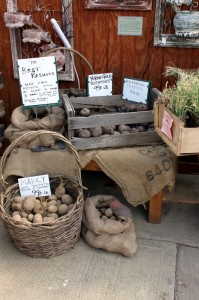
After snapping a few pictures of the root vegetables, a shopkeeper asked me why I was there. I explained about the Hounds in the Kitchen blog and being a homestead gardener. She offered to take me over to the greenhouses so I could see more of their operation.
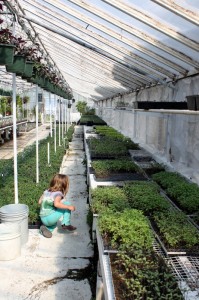
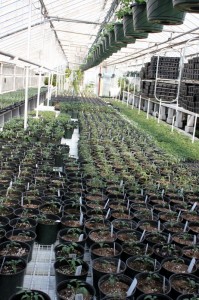
As luck would have it, Mr. Fisher himself was there for a personal tour. He showed Alex, Lil and I the dozens of varieties of tomatoes sown in the greenhouses. Two of the greenhouses were original buildings constructed by Fisher's grandfather who started the business in the 1950s. In addition to tomatoes, Fisher's sows fifty varieties of other plants including peppers, cucumbers, and flowers. Last year they had just over 100 varieties of home raised seedlings; this year he expects to have 95.
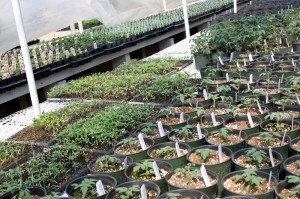
The toasty greenhouses keep plants warm and growing from tiny seedlings in 1000 plant flats to foot tall plants in three inch pots. Mr. Fisher is obviously a tomato lover, telling stories about the varieties his mother and grandmother used to grow and can. He pulled out a seed catalog and paged through, showing me heirlooms they have growing now and those they grew in the past.
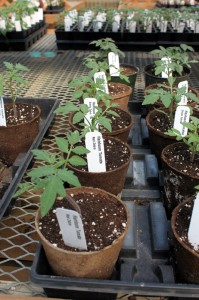
Heirlooms were $2.49 each and standard varieties cost a little less. We left with Julia Child, Clint Eastwood, Cherokee Chocolate, Russian Paste, Rutgers, and Roma tomatoes. Lil won't let us leave a nursery without flowers these days, so she picked out a purple pansy for her garden.
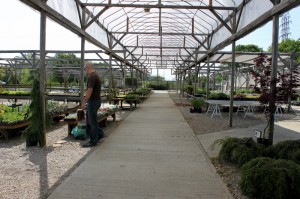
Like most local nurseries, Fisher's retails many plants they do not personally grow from seed. Fisher's is clearly set up to accommodate hoards of customers in their large and open showrooms, though there was not another person in sight when we visited on a spring weekday.
Jon Fisher Greenhouse also grows a plant of every variety in their test garden. On Saturdays and Sundays in August, visitors can enjoy tastes of the ripe produce.
While Fisher's is well out of the way for urban Columbus folk, I can tell it will be my source of heirloom tomato seedlings for years to come. Have you been?
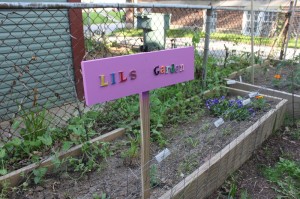 This year, we gave ownership of a 2 by 8 foot raised bed to our four and a half year old daughter Lillian. She illustrated a plan for what she wanted to grow in the early spring and we have been planting things ever since.
Last weekend we made a sign for her garden. I can't say the idea was original; my friend (and amazing birthworker) Eliza just made something similar for her daughter.
This year, we gave ownership of a 2 by 8 foot raised bed to our four and a half year old daughter Lillian. She illustrated a plan for what she wanted to grow in the early spring and we have been planting things ever since.
Last weekend we made a sign for her garden. I can't say the idea was original; my friend (and amazing birthworker) Eliza just made something similar for her daughter.



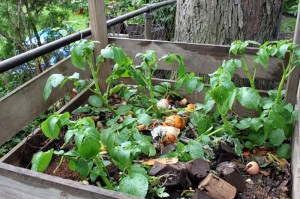
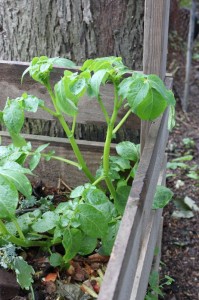
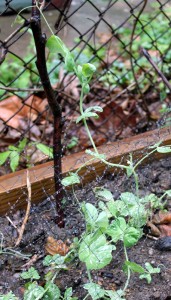



















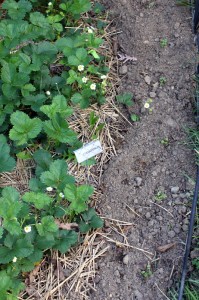
 A garden center can be an intimidating place. Implements of all kinds taunt you with promises to work less, remove more weeds, and garden more efficiently.
How many tools does one really need? They are expensive, after all, and there's nothing worse than buying an pricey thingamajig that gets used a few times and then collects dust.
A garden center can be an intimidating place. Implements of all kinds taunt you with promises to work less, remove more weeds, and garden more efficiently.
How many tools does one really need? They are expensive, after all, and there's nothing worse than buying an pricey thingamajig that gets used a few times and then collects dust.

 5) Watering can - We have two European style
5) Watering can - We have two European style  A
A 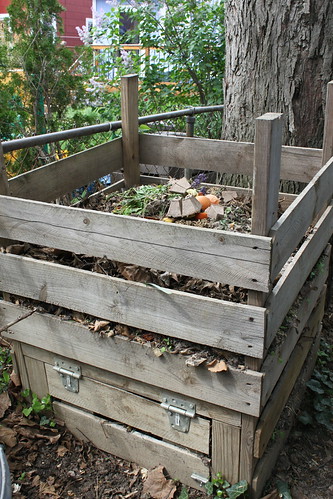 Here's how we do it:
Here's how we do it: